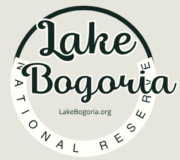Lake Bogoria National Park is one of Kenya’s ecological treasures—a unique blend of dramatic landscapes, geothermal wonders, and diverse biodiversity. Nestled in the Great Rift Valley, this park offers not only stunning views but also a dynamic natural environment shaped by volcanic forces and delicate ecological balances. Here’s everything you need to know about the geography and nature of Lake Bogoria.
🌿 Understanding Lake Bogoria’s Unique Ecosystem
Lake Bogoria’s ecosystem is a delicate yet resilient environment. The lake itself is alkaline and saline, meaning it supports very specific forms of life, including cyanobacteria (blue-green algae), which attract lesser flamingos in their thousands. Surrounding the lake are savannah woodlands, acacia thickets, and open scrubland, which host an array of wildlife and plant species.
Key components of the ecosystem include:
- Birdlife: Over 300 bird species, including lesser flamingos, greater flamingos, pelicans, eagles, and herons.
- Mammals: Warthogs, baboons, zebras, gazelles, and the greater kudu.
- Reptiles & Amphibians: Monitor lizards, snakes, frogs, and various amphibians thrive near the shoreline and springs.
- Plants: Dominated by acacia and scrub vegetation, with unique adaptations to salty and dry conditions.
The park is part of the larger Kenya Lake System World Heritage Site, underlining its ecological importance on a global scale.
💧 Why Lake Bogoria’s Water Levels Matter
Lake Bogoria is a closed-basin lake, meaning it has no outlet and is entirely dependent on rainfall and inflows from streams and hot springs. This makes the lake extremely sensitive to climate fluctuations and human impact.
- High water levels can dilute the salinity, reducing algae production and affecting flamingo feeding.
- Low water levels may expose more shoreline and hot springs but also concentrate salts, sometimes reaching toxic levels.
- Changes in water levels also affect breeding grounds for birds, access routes for animals, and the distribution of vegetation.
Understanding and monitoring these fluctuations is crucial for wildlife conservation, tourism planning, and community livelihoods.
🌋 Lake Bogoria’s Volcanic Past Revealed
Lake Bogoria lies on the floor of the Great Rift Valley, formed by tectonic activity and shaped by ancient volcanic processes. Although the surrounding volcanoes are now dormant, the area’s volcanic heritage remains very much alive through its geothermal features.
- Fault lines and fissures cut across the landscape, providing pathways for geothermal steam and gases.
- Basaltic rocks, lava flows, and ash deposits can be seen along the lake’s edge and trails, revealing the area’s fiery origins.
- The geothermal activity is a reminder of ongoing geological shifts that continue to shape the East African Rift system.
This volcanic background gives Lake Bogoria its otherworldly terrain and makes it a fascinating destination for geology enthusiasts.
🐾 Exploring Biodiversity at Lake Bogoria
Lake Bogoria is one of the most biodiverse areas in Kenya’s Rift Valley, thanks to its wide range of habitats. Its alkaline waters, wetlands, hot springs, dry savannah, and escarpments create multiple niches for different species to thrive.
Biodiversity highlights:
- Birds: The park is an Important Bird Area (IBA) recognized globally for its flamingo populations.
- Flamingos: Lake Bogoria hosts one of the world’s largest populations of lesser flamingos, which migrate between Rift Valley lakes.
- Other wildlife: The elusive greater kudu, with its majestic spiral horns, is often spotted here alongside warthogs, monkeys, and jackals.
- Invertebrates: Brine flies and crustaceans support the food chain, particularly for birdlife.
Conservation efforts focus on preserving this biodiversity amid climate challenges, habitat encroachment, and pollution in neighboring ecosystems.
🏞️ Stunning Landscapes of Lake Bogoria National Park
The park’s landscapes are as diverse as its species. From flat plains to jagged escarpments, boiling springs to placid waters, every corner offers something extraordinary.
Top scenic features:
- The Lake: Its mirror-like surface reflects flocks of pink flamingos and dramatic skies.
- Hot Springs and Geysers: Bubbling, steaming, and hissing features along the shoreline.
- Siracho Escarpment: Offers panoramic views of the lake and Rift Valley.
- Open Savannah: Perfect for wildlife viewing and photography, especially during golden hours.
- Sunrise and Sunset: The best times for dramatic lighting and serene reflections on the lake.
These landscapes are not only beautiful but also tell stories of geological evolution and ecological adaptation.
🔥 Amazing Geothermal Features at Lake Bogoria
One of the park’s signature natural wonders is its geothermal activity—among the most active in the region.
What to see:
- Hot Springs: Over a dozen boiling springs bubble along the lake’s shores, some reaching temperatures over 90°C (194°F).
- Geysers: Active geysers shoot steam and hot water several meters into the air—rare phenomena in Africa.
- Steam Vents and Fumaroles: Constantly release heat and gases, creating a surreal, otherworldly experience.
Visitors can walk safely around marked geothermal zones and marvel at these powerful natural displays. Some locals even boil eggs in the springs—a fun (and safe, if guided) demonstration of geothermal heat!
Final Thoughts
Lake Bogoria’s geography and nature combine to create one of Kenya’s most unique parks. It’s a place where volcanic power, delicate ecosystems, and dramatic landscapes intersect. Whether you’re a birdwatcher, geologist, photographer, or eco-tourist, understanding Lake Bogoria’s natural systems enhances your experience—and helps preserve them for future generations.
Plan your visit, respect the land, and let nature speak.
